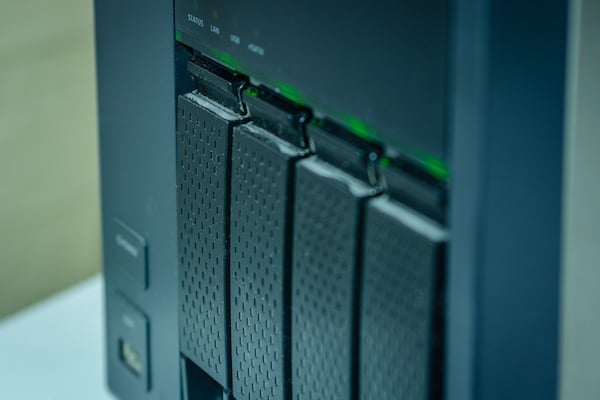RAID 6 is one of the most commonly used levels of RAID (Redundant Array of Independent Disks) in use today. RAID is a disk management solution for hardware arrays of data storage disks. It was first developed in the 1980s at UC Berkeley by a group of storage researchers.
Not all levels of RAID use the same technologies. Often, the term RAID is used synonymously with disk mirroring, but not all levels use mirroring, a technology that copies data from one disk onto the neighboring disk in an array. RAID 6 uses disk striping and parity rather than mirroring.
Characteristics of RAID 6 Arrays
A RAID 6 array requires a minimum of four disks. Although maximum array sizes are dependent on controllers and other limitations, 32 is often listed as the limit for RAID 5 and RAID 6 arrays.
Disk Striping
Disk striping is a technology that spreads stored data in stripes across all the drives in an array. It’s a dangerous technique to use on its own, because if one drive fails, then the data in a file will be partly gone, potentially rendering the file useless or destroyed. But with parity, disk striping can be a beneficial technology, mainly because it’s fast. RAID arrays that use disk striping typically have faster write speeds than those that use disk mirroring, because the data only has to be written once rather than twice.
Parity
Parity is a mathematical feature that provides additional security because it allows reconstruction of lost data. Parity ensures that data transfers correctly, since errors can cause bits from files to be lost. Parity uses bit checking, through checksums, to manage data. Disk striping does not provide a reliable backup system on its own, but parity is designed to rebuild data if a drive is lost.
Disk drives that use parity are able to reconstruct missing data based on all the information from the other drives. They do it mathematically, through an XOR operation (exclusive or in logic), using the information they have and what remains on the other disks to recreate the missing data.
RAID 6 is similar to RAID 5—both use disk striping and parity. Where RAID 5 only has one instance of parity, RAID 6 has two. This allows a RAID 6 array to withstand two drive failures rather than just one. This also means that RAID 6 arrays will need to dedicate approximately two disks’ worth of data to parity, because the amount of data stored in parity is about the storage size of two disks.
Why Is RAID 6 Popular?
RAID 6 is one of the most popular levels of RAID because it can withstand two drive failures and still protect the data stored in the array. And though RAID 6 is more expensive than RAID 5 and some other configurations, it is less expensive than RAID 10, another popular level that combines disk striping and mirroring.
There are multiple levels of RAID that are no longer in common use or are rarely mentioned in redundancy discussion, such as RAID 4. RAID 6 is one of the few that are still in regular use, because it improves upon previous versions.
Concerns About RAID 6
Though RAID 6 is still in use, some storage experts have expressed skepticism and concern about its relevance. Research from years past decreed that even RAID 6 would soon no longer be useful because its fault tolerance is limited. Though RAID 6 has better fault tolerance than level 5 and can withstand more drive failure, it can still only tolerate two drive failures before data is lost.
In hard disk drives, an unrecoverable read error (URE) is a section of a drive that is completely lost. It’s a ruined sector on a disk that cannot be rebuilt. When a disk in an array fails, and the RAID 6 rebuilding process begins (thanks to parity), there is a possibility that a URE will appear on disks while data is being reconstructed.
Also, the larger an array is, the longer it will take to rebuild data once a drive is lost. The likelihood of finding another URE during a rebuild process increases with the size of the array.
RAID 6 is still accepted as one of the most popular levels, but some storage professionals believe it’s unsafe and risky, especially with the comparative security of cloud storage and backup. However, other data storage users see the benefit in continuing to use on-premises hardware and legacy RAID technology that still allows them to store large numbers of files.



